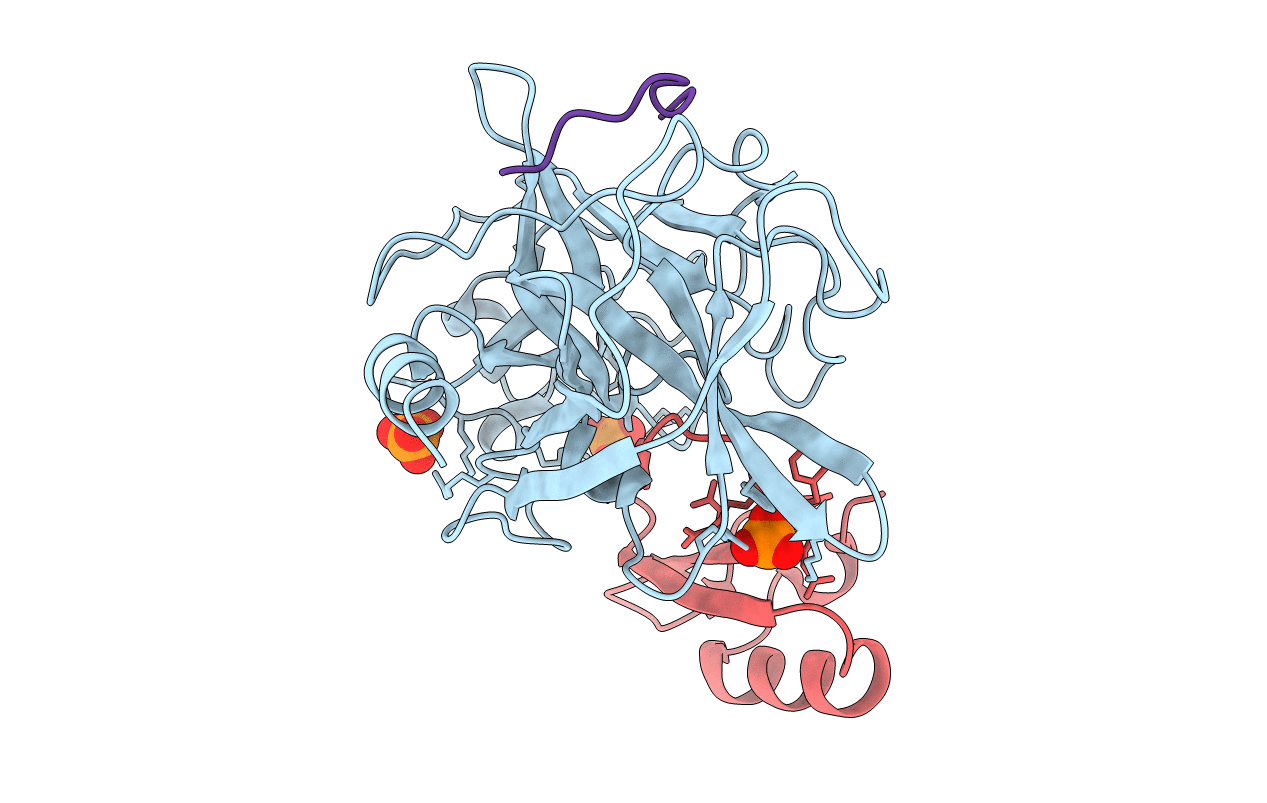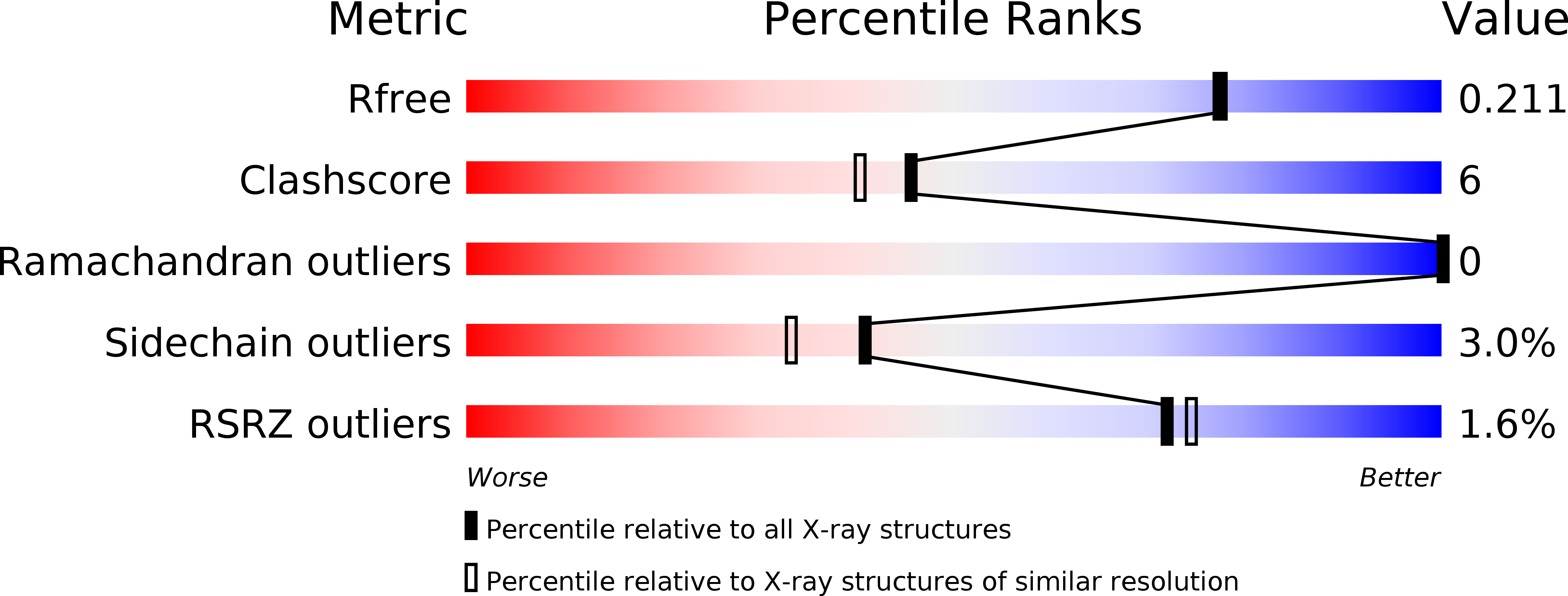
Deposition Date
2012-09-17
Release Date
2013-02-27
Last Version Date
2024-10-30
Entry Detail
PDB ID:
4H4F
Keywords:
Title:
Crystal structure of human chymotrypsin C (CTRC) bound to inhibitor eglin c from Hirudo medicinalis
Biological Source:
Source Organism:
Homo sapiens (Taxon ID: 9606)
Hirudo medicinalis (Taxon ID: 6421)
Hirudo medicinalis (Taxon ID: 6421)
Method Details:
Experimental Method:
Resolution:
1.90 Å
R-Value Free:
0.20
R-Value Work:
0.15
R-Value Observed:
0.15
Space Group:
P 21 21 21


